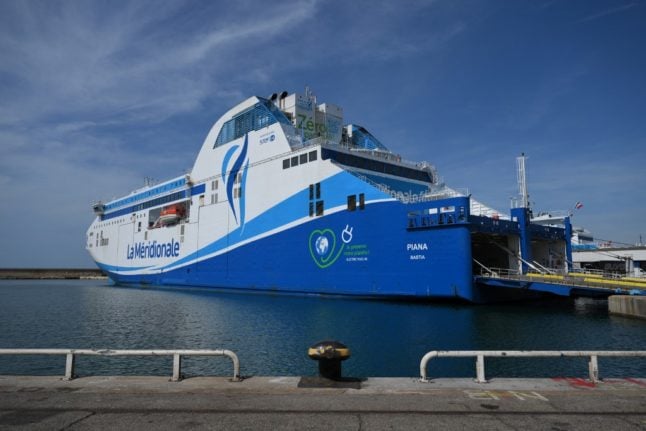Promising to be the ferry of the future, the shipping company La Méridionale’s flagship, the Piana, will emit zero polluting particles during its journey between Marseille and Bastia, on the island of Corsica.
“It’s an unprecedented solution, a world first,” said Marc Reverchon, the president of the company, to BFMTV.
The device essentially works by neutralising the sulphur and fine particles with sodium bicarbonate and then filtering them out. It has been installed on the four engines of the Piana are set to eliminate 99 percent of sulfur oxides (SO2), as well as 99.9 percent of fine and ultrafine particles, which are among the main air pollutants emitted by ships.
Having cost approximately €16 million, the scheme was supported by France’s Agency for Ecological Transition, as well as the Provence-Alpes-Côte d’Azur Region, as part of its regional climate plan “Une COP d’Avance.”
The region had already committed €30 million in support of shore side power (electrification of the ships) in 2019 to enhance the air quality of, like port cities Nice, Toulon and Marseille.
Meanwhile, for the city of Marseille specifically, it is ready to invest in bringing the filter from the Piana to other cruise ships. After the boat’s inauguration, Marseille mayor Benoît Payan tweeted that he hopes other “big polluters” will “follow its example.”
While private jets, which are responsible for over half of global aviation emissions, are the current focus of many climate activists’ ire, cruise ships are not far behind.
Cruise ships are known to be huge polluters – a 2019 study by the NGO Transport & Environment found that cruise ships were responsible for more pollution than all of Europe’s automobiles combined, and the city of Marseille knows this intimately.
Black smoke and sulfuric smells from cruise ships and ferries have been part of daily life for Marseille residents for several years.
The city’s mayor, Benoît Payan, even launched a petition against pollution in the Mediterranean caused by the liners. It collected over 44,000 signatures.
In response to climate concerns, the sector is trying to adapt, and a zero emissions ferry was unveiled in Marseille on Monday. Its fine-particle filtration system will be a global first.



 Please whitelist us to continue reading.
Please whitelist us to continue reading.
It’s got 4 diesel engines. How can it possibly be zero emissions? Is that like saying that because my car has a catalytic converter it’s also ‘zero emission’? A zero emission ferry would use a sail or an electric motor.